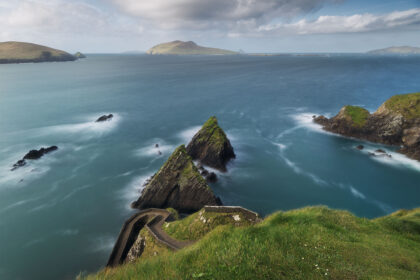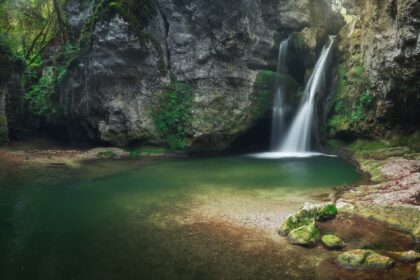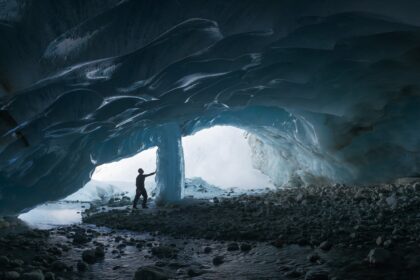In landscape photography, the Dolomites and the Italian Alps are simply beautiful. Last november, I did a three-day road journey through this breathtaking region. Between the semi-snow-covered landscapes, the still-yellow trees and the partially frozen lakes, the magic of autumn and winter blending together is there for all to see!
During this time, many accommodations, eateries, and ski facilities tend to shutter their doors. However, this creates an opportune moment to explore the Dolomites, as the typically bustling locales lay peacefully deserted. Below, I present my selection of 7 enchanting sites for landscape photography in the Dolomites during November, easily accessible by car or on foot.
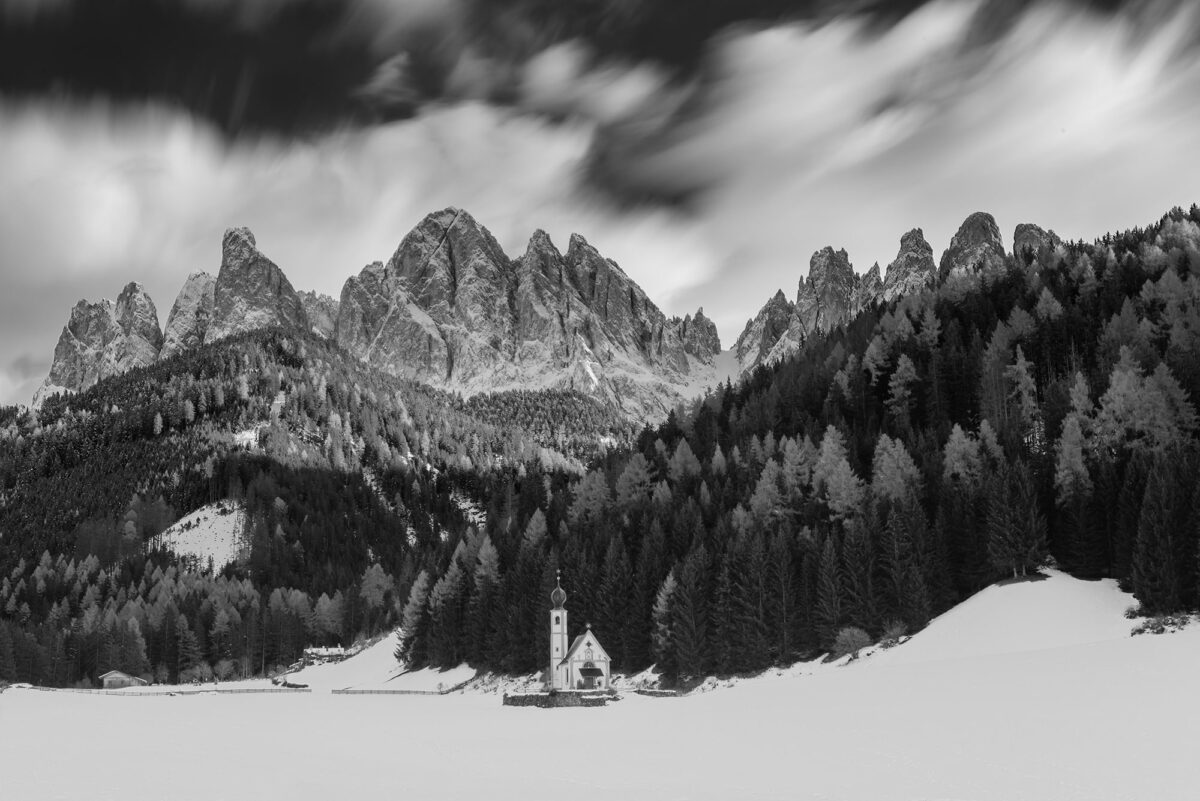
1. Photographing the cute Chiesetta di San Giovanni in Ranui
A great classic of the Dolomites for landscape photography, the church of San Giovanni in Ranui is accessible all year round. Nestling in a valley on the edge of the forest, it is the dizzying mountains behind it that make the view so impressive. There are several framing options. In my case, I chose to take the photo from the bottom of the valley. The location is at the bottom of the valley, with a car park nearby.
How to get there
Drive to the car park at the bottom of the valley and walk to the Belvedere della Chiesa di San Giovanni. The distance is around 100m and the place is very accessible. You don’t need any hiking skills. It really is ideal. Afterwards, there’s nothing to stop you taking a closer look at the church.
➜ Car park
➜ Photo spot
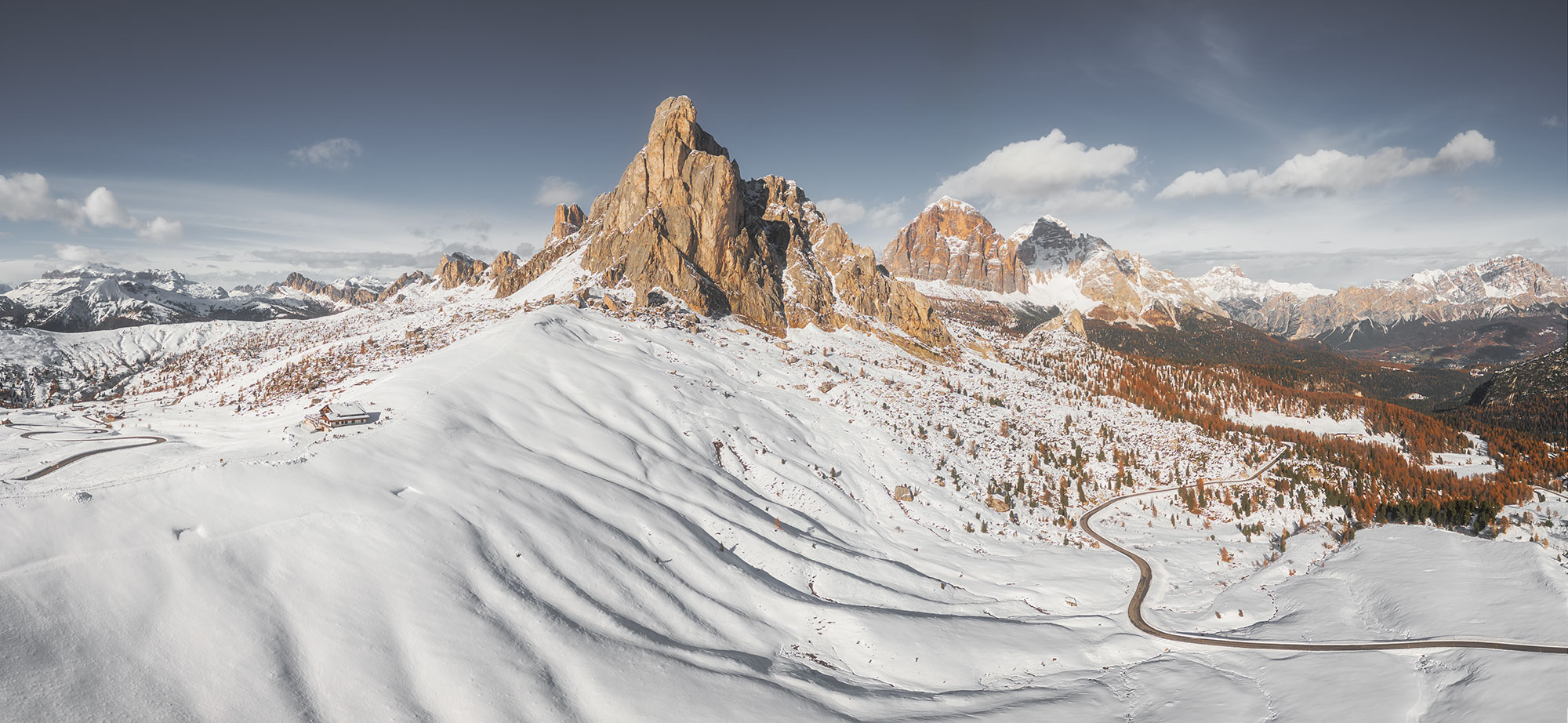
2. Passo Giau: capturing the majestic heart of the Dolomites
The Passo di Giau, also known as the Giau Pass, rises to an altitude of 2,233 metres in the heart of the Dolomites, in the province of Belluno in the Veneto region of Italy. It links the towns of Colle Santa Lucia and Selva di Cadore in the Fiorentina valley to Cortina d’Ampezzo, located in the basin of the same name in the Guóite valley.
It’s open all year round, so we took the opportunity to climb up to the Berghotel Passo Giau, which is at the top. This is where you get a great view of the famous Ra Gusela along landscape photographers. I was hoping to capture the classic photo of the peak reflected in the lake, but the snow had already covered the whole landscape. So I opted for a drone panorama to change the perspective. I thought the mountains were beautiful and the road stood out against the snow.
How to get there
All you have to do is take the road over the Col du Giau and get in your car. But be sure to check the weather forecast before you set off, and remember that snow tyres are compulsory.
➜ Passo Giau car park
➜ Photo spot
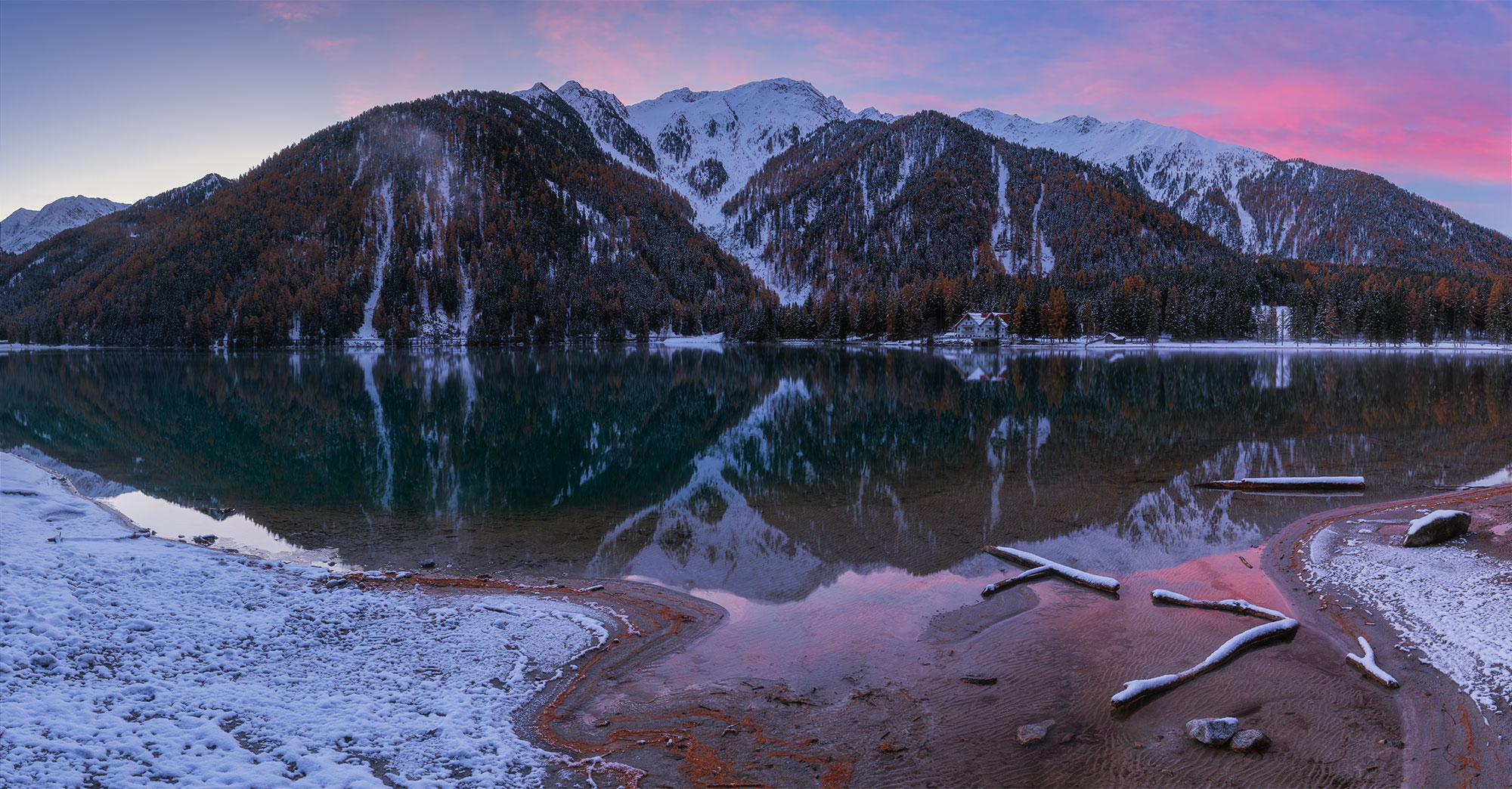
3. Sunrise landscape photography at Lago Anterselva
Looking for a beautiful lake for landscape photography that’s not too touristy? Then Lago Anterselva is for you! The third largest lake in South Tyrol, it is located in the Anterselva valley, close to the border with Austria. I discovered this lake because our hotel was nearby and the location was perfect for sunrise.
There’s a flat hiking path that runs along the banks of the lake, offering a number of composition options. In this month of November, the place was completely empty and we were the only ones to enjoy this magnificent sunrise. What’s more, the snow covering the trees gave the place a magical feel.
How to get there
Lago Anterselva is accessible all year round. There is a car park just a few hundred metres from the lake on foot. It’s easy to get to and doesn’t require any hiking skills.
➜ You can find all the information here
➜ Photo spot hotel
➜ Photo spot pink sky
➜ Photo spot orange sky
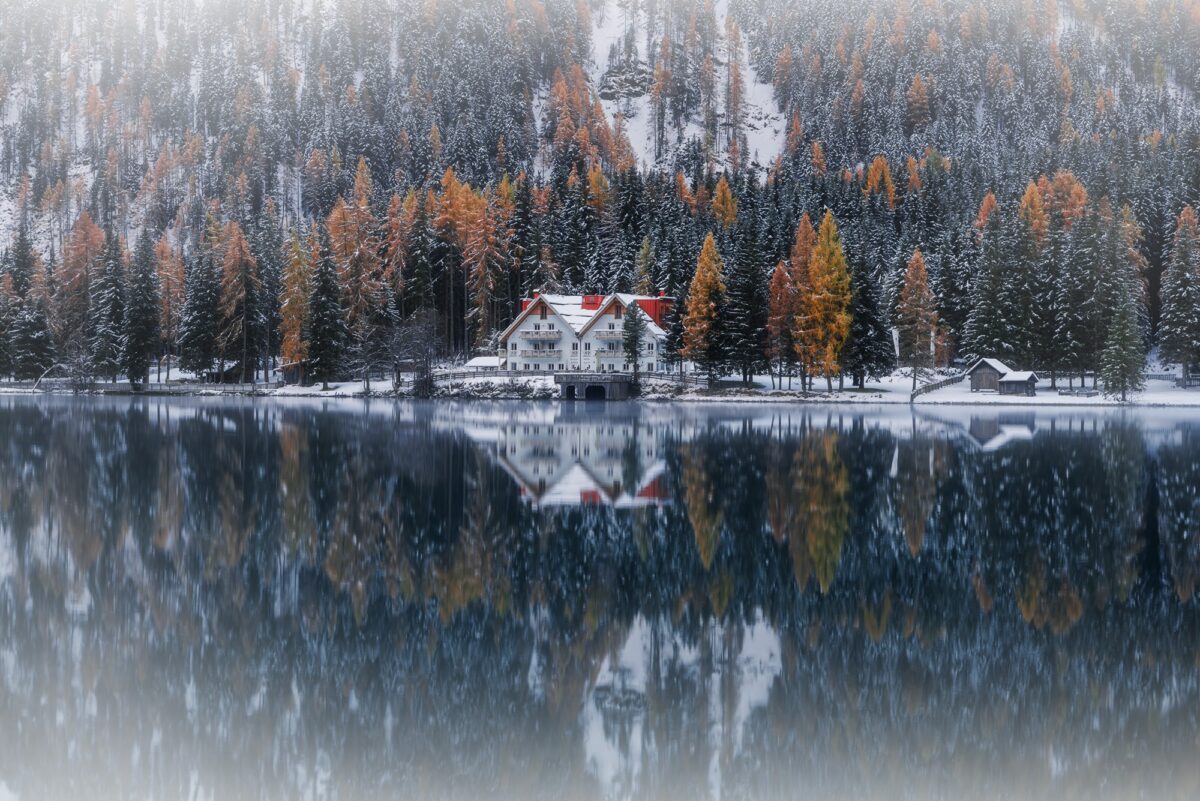
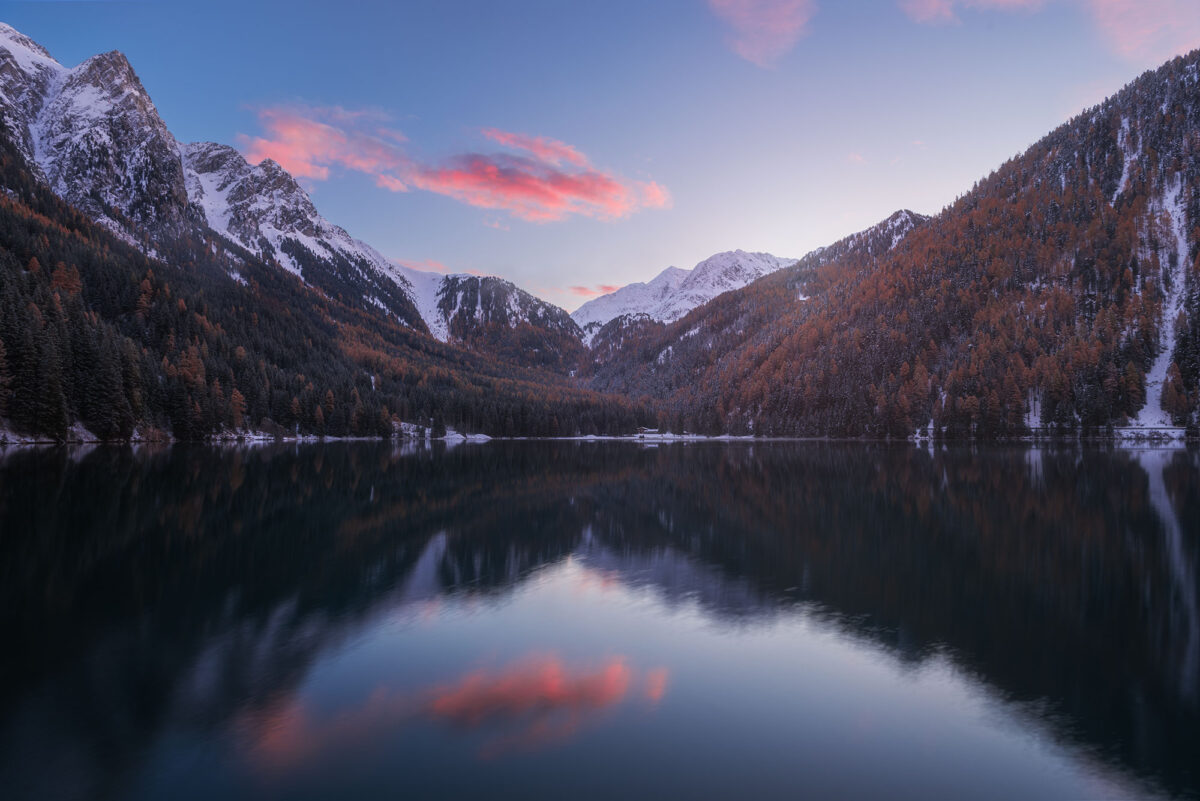
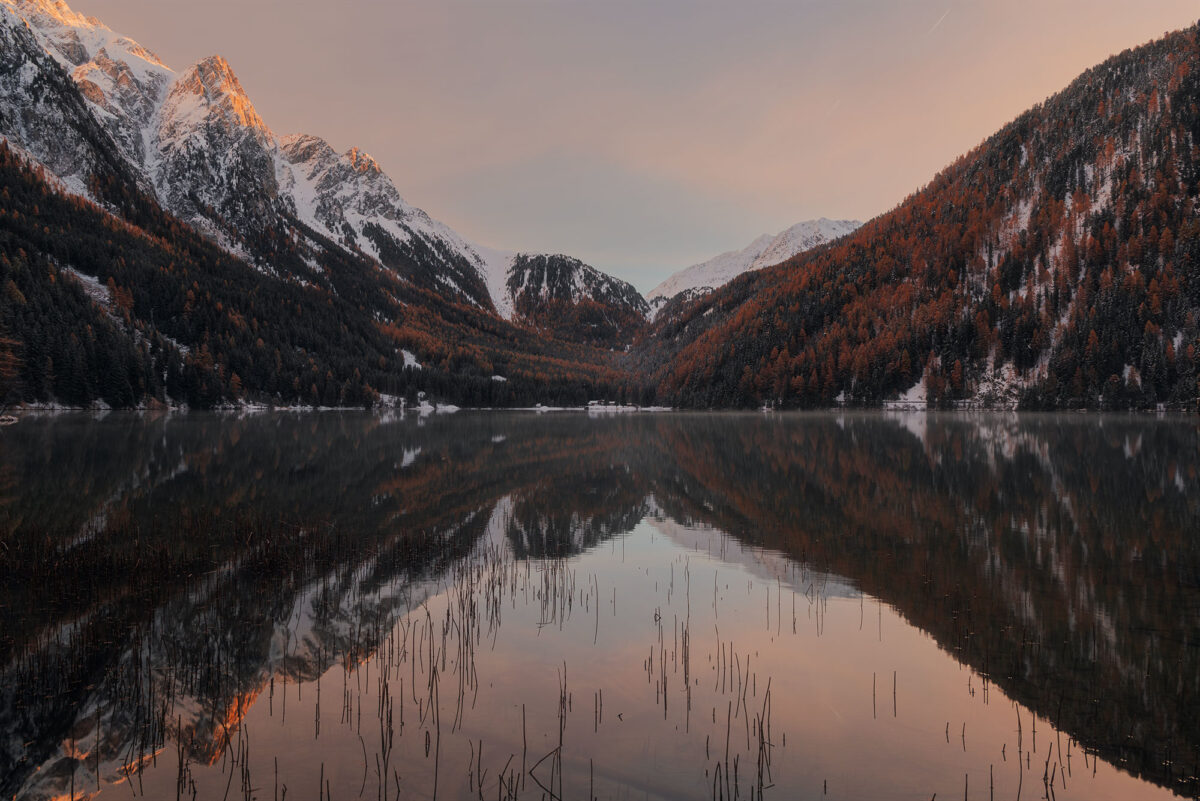
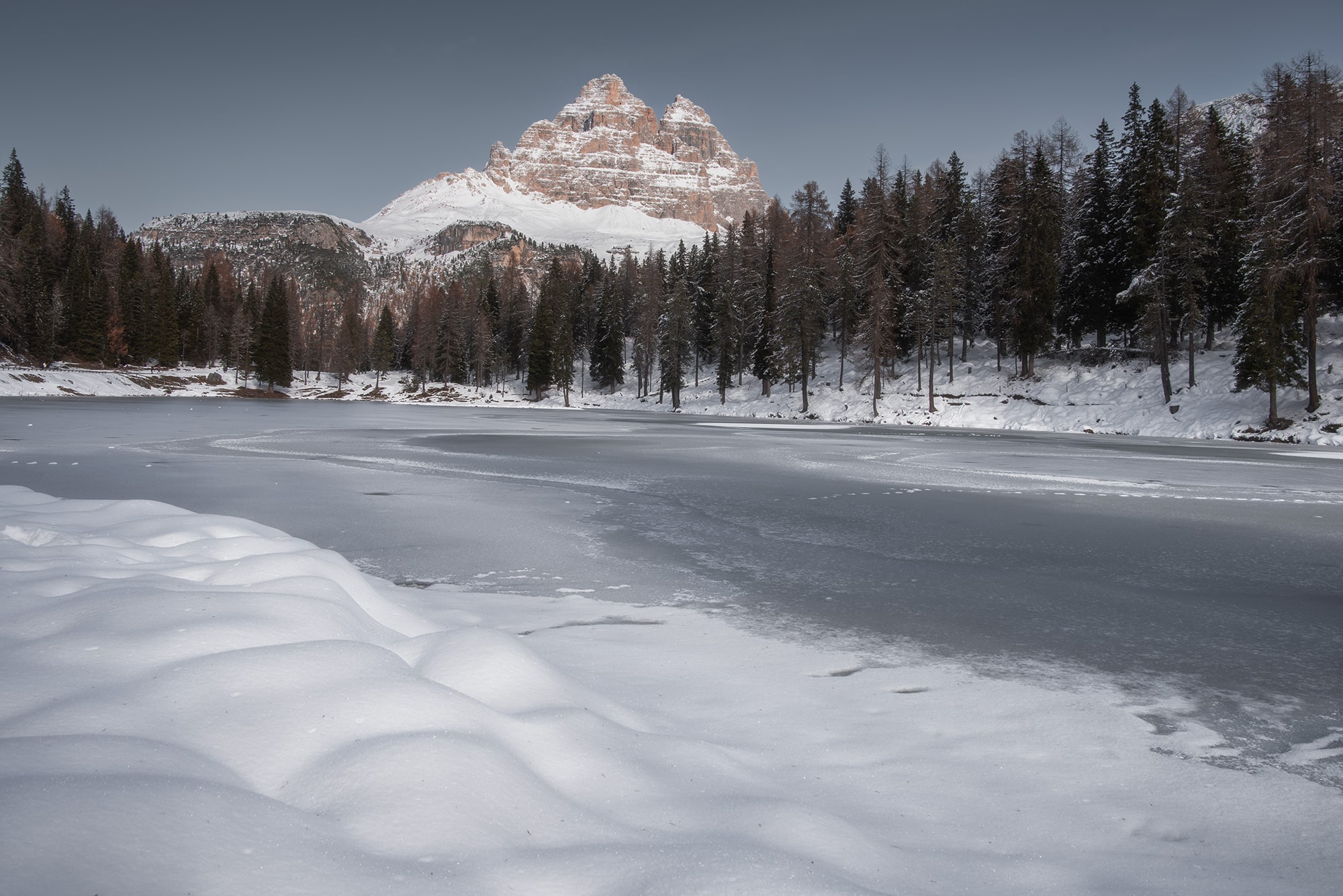
4. White wonderland: snowy scenes at Lago Antorno
Lago Antorno is a very pretty little Alpine lake, located just 2km from Lago Misurina. Surrounded by a forest of fir trees, with the peaks of the Dolomites rising behind it, it’s a sight to behold. With the cold November nights, the lake was already frozen and the snow had covered the fir trees, giving the place a magical atmosphere perfect for winter landscape photography.
How to get there
Lago d’Antorno is very easy to reach and is just a few minutes’ drive from the famous Misurina lake. The car park is right opposite the lake, so you hardly need to drive at all to get to Lago d’Antorno. Modest in size, you can quickly walk around it to find a beautiful composition. Personally, my favourite viewpoint is the one with the peaks in the background, which provides an impressive contrast with the lake and forest.
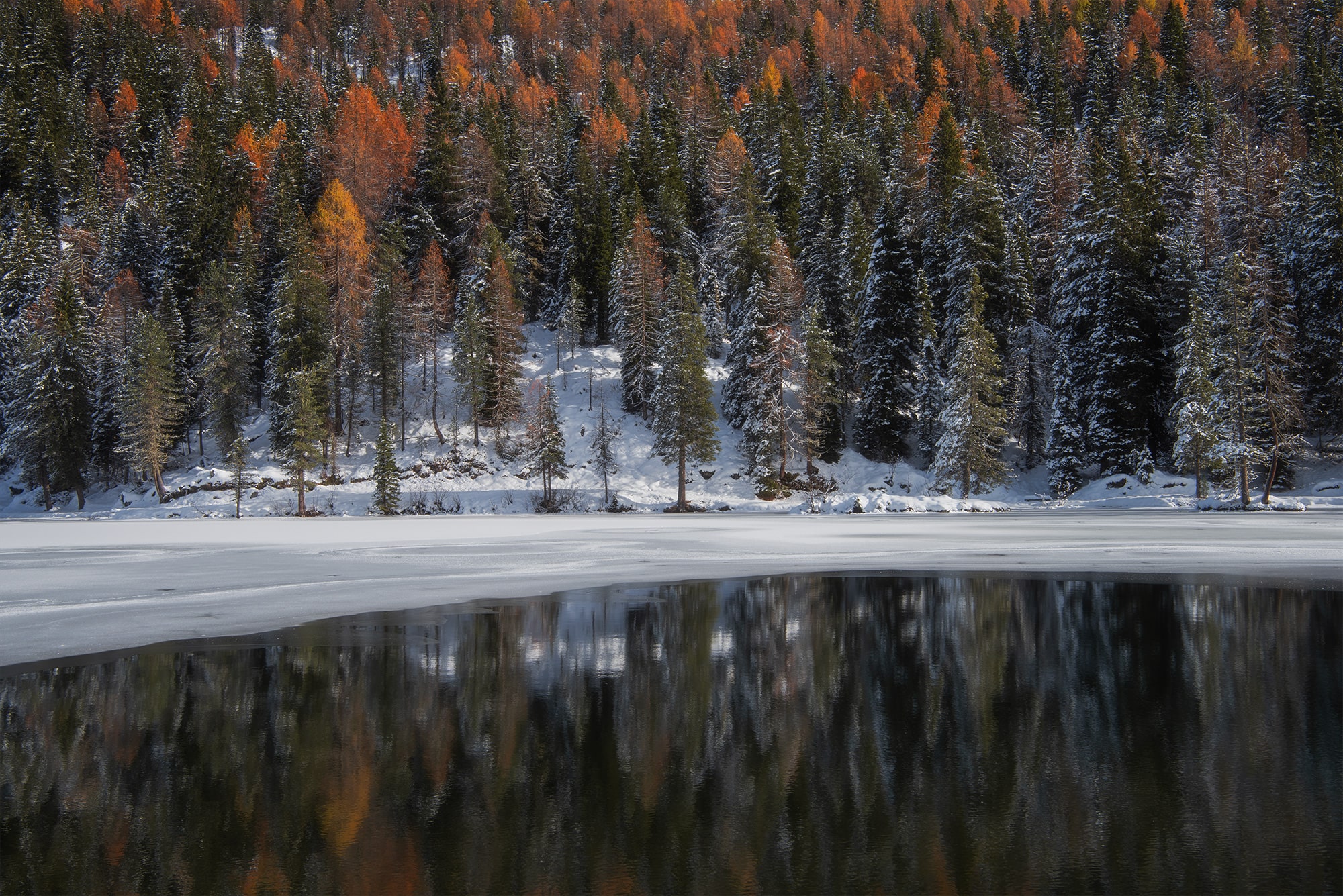
5. Capturing Half-Frozen Lago di Misurina
Lake Misurina is located in the municipality of Cadore, Italy, in the province of Belluno at an altitude of 1754 m, just 2 km below Lake Antorno. It is the largest natural alpine lake in the Dolomites. Known for its dramatic views of the Dolomite peaks, I opted for a less conventional landscape photograph. When I arrived, I noticed that part of the lake was frozen, creating a beautiful curve in the water. What’s more, the reflections of the green and yellow fir trees were reflected in the water, creating a very beautiful mirror effect.
How to get there
Lake Misurina is accessible by car and the car park is right next door. In November, all the restaurants and hotels were closed and we were just a handful of visitors. It was perfect for taking it easy.
It is possible to walk around the lake, which offers many opportunities for composition.
➜ Car park
➜ Hikes around Lake Misurina
➜ Photo spot
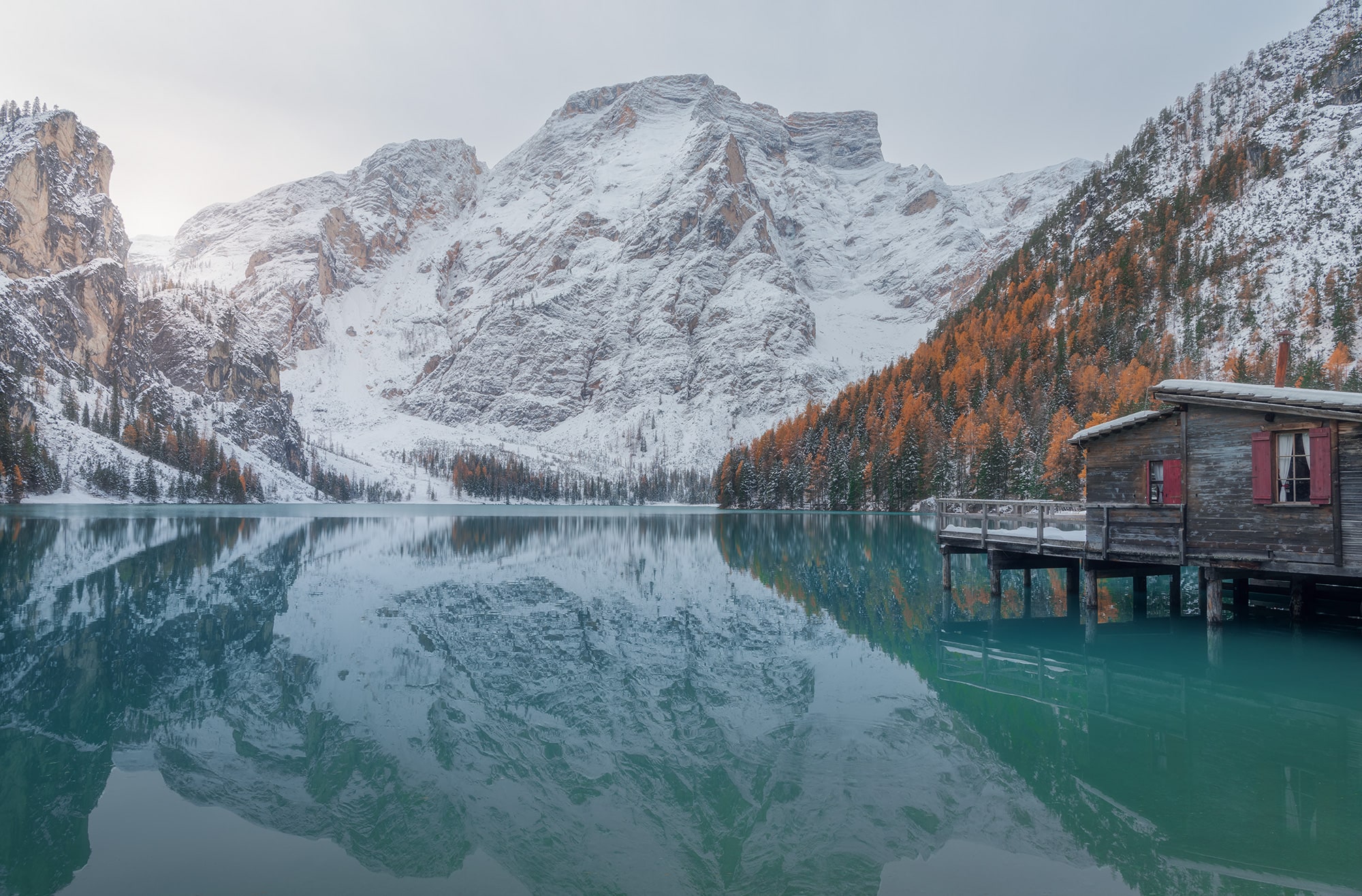
6. Lago di Braies in november: A photographer’s wonderland
Lago di Braies dominates the social networks and is one of the must-sees in the Dolomites. Situated at the foot of the imposing rock face of the Croda del Becco, this small Alpine lake rises to an altitude of 1,496 metres. Knowing that this is a very touristy place, I hope that in November it will be less crowded. And to avoid the crowds, we arrived early in the morning.
And what luck, there were only 5-6 people. Access to the lake is very easy and flat. We were able to enjoy the place in complete peace and quiet and I was able to take my time to take a few photos. The scenery was magnificent! The snow was slowly covering the mountains and it hadn’t been cold enough for the lake to freeze. It was still a beautiful turquoise blue.
So I’d only recommend this visit if you like lakes and if you’re visiting the region during a less touristy period. If you come early in the morning, you’re sure to avoid some of the visitors who don’t want to wake up early! On the other hand, I think I’d avoid this place in high season.
How to get there
In November, access to Lago di Braies is easy. The road is open. There are four car parks on the access road. As there weren’t many people, we were able to park as close to the lake as possible. Entry to the lake is free, but there is a charge for parking. After that, you just have to walk a few metres to get to the lakeside.
In summer, however, it’s a different story. The road is closed for a few weeks and you need to book your car park in advance.
➜ Find all the parking information here
➜ Photo spot
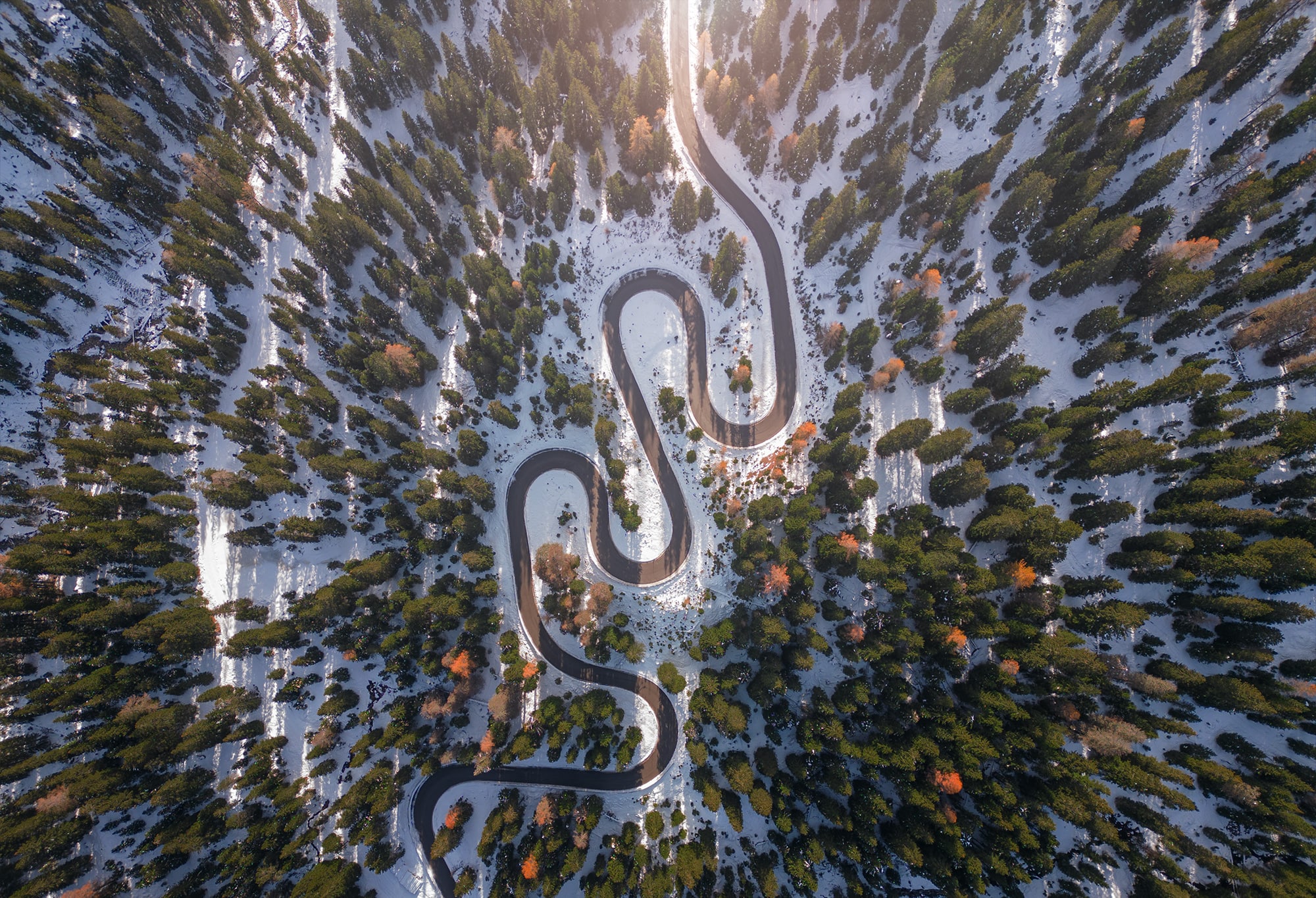
7. Discovering the scenic Snake Road in the Dolomites
You’ve all seen this winding road on social networks. It’s a photo to take with a drone, for those of you who have one. Beautiful in any season, it’s a classic photo that’s easy to take, even if you’re new to drones. You can have fun making videos with cars going up or down the pass, as it’s a fairly busy place.
How to get there
The Snake Road in the Dolomites is located on the road leading up to the Passo Giau, from Cortina d’Ampezzo. If you’ve decided to make the pass, you won’t want to miss this stop! Just follow the road up to the pass. Below is where we parked our car.
Published on 13.03.2024 by Jennifer Esseiva
